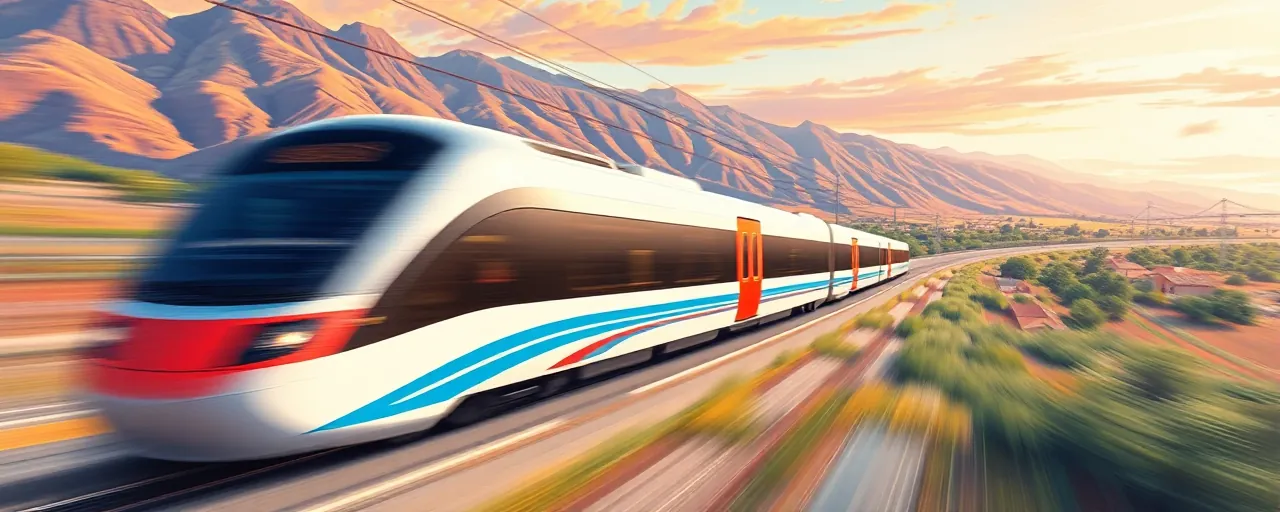A Quiet Revolution Hits the Tracks
In the bustling Bay Area, a shift is underway. Caltrain, a rail line stitching San Francisco to San Jose, has seen its trains packed with passengers since flipping the switch to electric service in September 2024. Ridership soared by over half a million in December alone, a 41% leap from the previous year. It’s a number that catches the eye, not just for its size but for what it signals, a rare rebound to pre-pandemic hustle after years of stuttering recovery.
The spark came out of nowhere for some, yet it’s no accident. Behind the surge lies a hefty pile of cash, $2.4 billion from local taxpayers, state coffers, and federal grants, all funneled into swapping diesel engines for a sleek, electric fleet. Governor Gavin Newsom hailed it as a win for cleaner air and faster trips at an August 2024 ribbon-cutting, flanked by big names like Nancy Pelosi. But beyond the fanfare, real questions linger about what this means for commuters and the state’s grander plans.
Faster Rides, Lower Costs
For the daily rider, the perks are tangible. Electric trains hum along quicker than their diesel ancestors, shaving minutes off commutes between Silicon Valley’s tech hubs and San Francisco’s financial district. They’re quieter too, a relief for neighborhoods long rattled by clattering engines. And then there’s the money angle, fuel costs are down, and the fleet’s knack for feeding 23% more energy back to the grid than expected has slashed electricity bills, a savings Caltrain officials peg in the millions.
The environmental payoff stacks up as well. Ditching diesel has wiped out tailpipe emissions, a boon for air quality in a region choked by traffic. Studies peg electric rail as slashing greenhouse gases by up to 75% compared to trucking goods, a stat that resonates as California pushes to green its economy. Yet, not everyone’s sold. Some Bay Area residents grumble about construction disruptions, and taxpayers elsewhere wonder why their dollars prop up a regional line.
A Bigger Picture Takes Shape
Caltrain’s glow-up isn’t a solo act. It’s a piece of a sprawling puzzle, California’s bid to weave a zero-emission rail network linking cities and suburbs. The state’s High-Speed Rail Authority kicked in $714 million, nearly 40% of the project’s tab, eyeing a future where these tracks tie into a high-speed line zipping from San Francisco to Los Angeles. Ian Choudri, the authority’s CEO, calls it groundwork for that vision, a network promising 220 mph speeds and smoother travel across the state.
History offers a nod of approval. Japan’s Shinkansen and France’s TGV turned high-speed rail into game-changers decades ago, cutting car and plane trips while boosting economies. California’s version, though, is a work in progress. The Central Valley segment chugs along, but delays and cost overruns have skeptics questioning if the full dream will ever roll out. Supporters argue the Bay Area’s success proves the concept, even if the finish line feels miles off.
Who’s Footing the Bill – and Why?
Cash for Caltrain’s electric leap didn’t fall from the sky. State transportation chief Toks Omishakin points out that nearly two-thirds of the funding flowed from California’s own budget, with programs like the Transit and Intercity Rail Capital Program chipping in $387 million. Local agencies and federal grants filled the gap. It’s a model of teamwork that’s worked elsewhere, think Washington State’s transit upgrades, though California’s scale stands out.
The why is trickier. Advocates for sustainable transport see it as a lifeline for communities boxed out by patchy bus routes or car-only sprawl, especially in the Central Valley or Inland Empire. Others, including some fiscal watchdogs, ask if the payoff justifies the price tag in a state juggling housing crises and wildfire bills. Jobs are a bright spot, construction and maintenance gigs have popped up, but the debate over priorities simmers on.
What’s Next for California’s Rails?
The Bay Area’s electric buzz has folks wondering what’s around the bend. Caltrain’s ridership spike suggests people will ride if the service delivers, a lesson not lost on planners eyeing expansions. High-speed rail remains the golden goose, with promises of linking Los Angeles to the Central Valley by decade’s end. Smaller wins, like better bus connections or bike-friendly stations, could amplify the gains, turning stations into hubs instead of pit stops.
Still, hurdles loom. Funding’s a perpetual tightrope, and integrating a patchwork of local systems takes grit and patience. The Bay Area’s taste of success offers a glimpse of what’s possible, cleaner air, quicker trips, and a nudge away from gridlock. Whether that scales statewide hinges on execution, not just ambition, a reality riders and taxpayers alike will watch closely as the tracks stretch farther.
